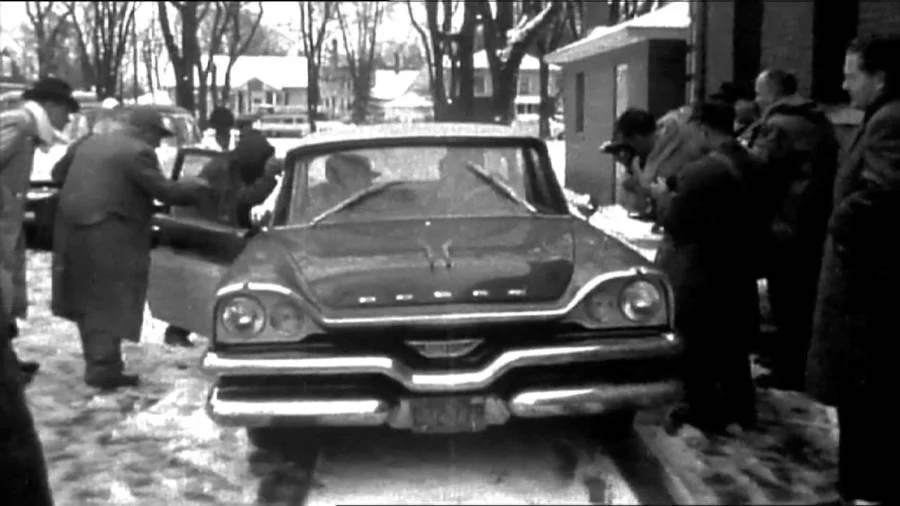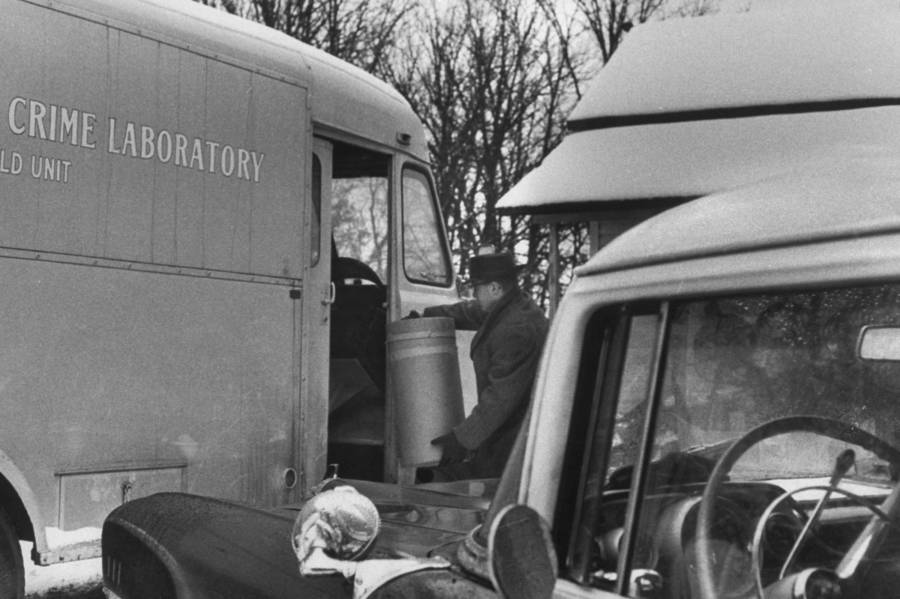Ed Gein's House: Photos Of America's Most Disturbing Crime Scene
Table Of Content

Only when his health had begun to seriously deteriorate toward the late 1970s did Gein leave Central State Hospital. It was here that he died of cancer and respiratory illnesses on July 26, 1984. Wikimedia CommonsThe Butcher of Plainfield's grave marker was stolen in 2000 and became a featured item on a 2001 tour by the Angry White Males.
Places Near the Ed Gein Museum
Wisconsin murderer and grave robber Ed Gein was arrested on the night of November 16th, 1957. While investigating the disappearance of local hardware store owner Bernice Worden, authorities uncovered a dark secret inside Gein’s dilapidated farm house. Besides Worden’s body, a trove of macabre artifacts were discovered amidst the garbage and clutter in the house.
Find the Site of Mary Hogan’s Tavern
Houses of horror and other true crime locations - MSN
Houses of horror and other true crime locations.
Posted: Mon, 08 Apr 2024 07:00:00 GMT [source]
After all, most serial killers develop their gruesome interests at an early age with fetishes of an abusive, sexual, or masochistic nature. The dates and events detailed below have been compiled from numerous sources to provide an accurate and concise history of Gein’s life and the continuing reverberations his crimes have on contemporary popular culture. After Gein’s arrest, his lawyer, William Belter, entered a plea of not guilty by reason of insanity, and in January 1958, Gein was found unfit to stand trial after a schizophrenia diagnosis. He was committed to Central State Hospital in Waupun, Wisconsin, where he variously worked as a mason, carpenter’s assistant, and medical center aide.
The Eerie Legends of the Most Haunted Cemeteries in Wisconsin
Ten years after Ed Gein's house was raided and he was committed to Central State Hospital, he was found fit to stand trial. That November he was found guilty of the murder of Bernice Worden. However, since Gein was also found insane during the initial trial, the killer was once again committed to Central State Hospital. Gein transported corpses back to the house so he could express his anatomical curiosity on the bodies. He'd cut off various body parts, have sex with the deceased, and even made masks and suits of their skin. A belt made of human nipples, for instance, was among the evidence.
But he failed to establish any meaningful connections with his classmates, who remembered him as socially awkward and prone to odd, unexplained fits of laughter. What’s more, Ed’s lazy eye and speech impediment made him an easy victim of bullies. Born Edward Theodore Gein on August 27, 1906, in La Crosse, Wisconsin, Ed came of age under the influence of his religious and domineering mother, Augusta. She raised Ed and his brother Henry to believe that the world was full of evil, that women were “vessels of sin,” and that drinking and immortality were the instruments of the devil.
The reconstruction took place in 2012 and features renovations that incorporate the use of light and the details that emerge when connecting the modern addition with the existing. This multi-story building is situated in one of Kansas City’s oldest and most historic neighborhoods. Designed in 1908 and constructed in 1909, this historic three-story building doubled as a home and studio for architect Louis Curtiss. The integration of his own residence, office, and first floor use makes it unique.
Ed Gein: Portrait of America’s Original ‘Psycho Killer’
At the time of Gein’s arrest in 1957, the building had been the Waushara County jail, and the cell where he was placed is still there and open to the public. Though rare, artifacts related to Gein can be found in private and public collections around the country. Most notable is the haunted cauldron on display at the Haunted Museum in Las Vegas. The property where the Gein farm was located is a few minutes outside of Plainfield on the southwest corner of Archer and 2nd Ave. The driveway appears to be in the same location as it was in the 1950s when Gein still lived there.
murderer.
Ed Gein revisited - Waupaca County News
Ed Gein revisited.
Posted: Wed, 24 May 2023 07:00:00 GMT [source]
With just over 199 thousand residents (per the Overland Park city website) and spanning 75.6 square miles, this city has much to offer to those living there. Which area of the state is the most desirable to live in, though? Do you want to live in a densely forested area, an agriculturally-rich smaller town, or decorate your city center apartment with tasteful urban decor?


Most recently, it's been held as private property (seen above). The canon of American serial killers, true crime, and their overflow into countless artistic media arguably began with the discovery of the horrors inside Ed Gein's house. After George died in 1940, Ed and Henry began working more odd jobs to support the family. In 1944, the brothers were burning brush on the property, when the fire raged out of control. Ed Gein‘s family first moved to a house in Plainfield in 1915. His father, George Philip Gain, was an alcoholic and died in 1940.
He shot and killed her at her bar in the town of Bancroft just north of Plainfield in 1954. Ed Gein died of respiratory failure due to lung cancer at the Mendota Mental Health Institute on July 26, 1984. As soon as investigators stepped into Ed Gein’s house, they found Bernice Worden in the kitchen. She was dead, decapitated, and hung by her ankles from the rafters.
In 1957, local store owner Bernice Worden disappeared, and Plainfield police entered Gein's home in search of her. In doing so, the authorities got much more than they bargained for. What seemed like an idyllic rural American home was instead a house of horrors, now sometimes simply referred to as "Ed Gein's murder house." When the body of hardware store owner Bernice Worden was discovered gutted and mutilated in Gein’s house on November 16, 1957, everything changed.
When Gein was arrested in Plainfield in 1957, he was held in the Waushara County Jail in the nearby town of Wautoma. Like many old jails, this one was designed to also serve as the home of the sheriff. He and his family lived in the front of the building, with the jail cells in the back. The sheriff’s wife was likely responsible for feeding the prisoners and doing their laundry.
He’s also seen as the inspiration for the mother-loving Norman Bates of Psycho, The Texas Chain Saw Massacre‘s skin-wearing Leatherface, and The Silence of The Lamb‘s Buffalo Bill. Ed Gein readily admitted that he’d collected most of the remains from three local graveyards, which he’d started to visit two years after Augusta’s death. He told police he’d gone to the graveyards in a daze, looking for bodies that he thought resembled his mother.
The body of Bernice Worden was found in his home the same day she went missing from her hardware store on November 16, 1957. During the subsequent search of Gein’s house, the face of tavern owner Mary Hogan was discovered. Gein may have been involved in additional disappearances, but they were never conclusively linked to him. Most of the human remains found in his home were never identified. Prior to his discovery as one of American history's most notorious murderers, Ed Gein, now known as the Butcher of Plainfield, lived a quiet life in a remote farmhouse near Plainfield, Wisconsin (via the A&E True Crime blog).
Comments
Post a Comment